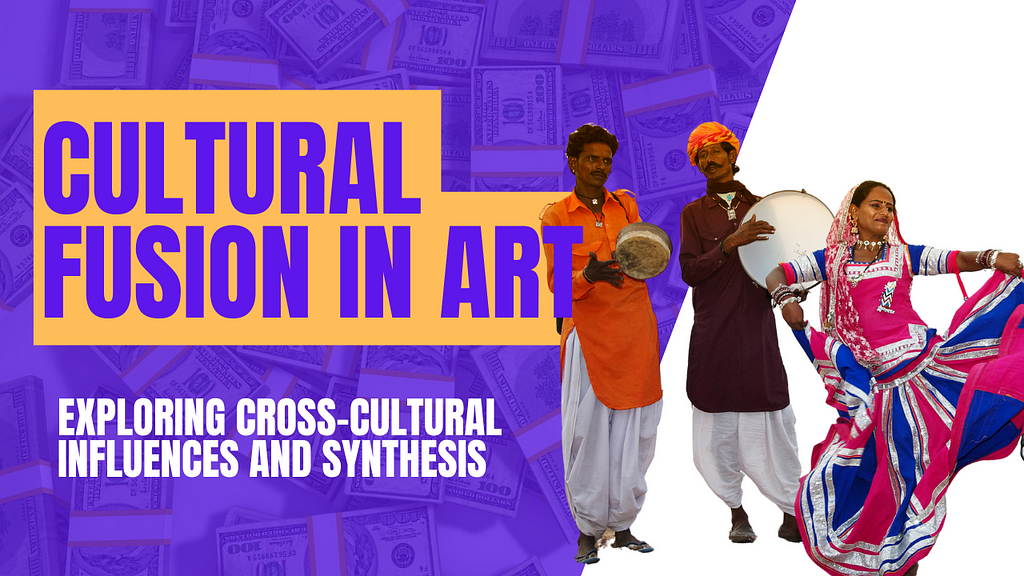
Art has always been a mirror reflecting the diverse tapestry of human culture. In the ever-shrinking global village, artists are increasingly drawing inspiration from a myriad of cultural influences, leading to a fascinating phenomenon known as cultural fusion. This artistic synthesis involves the blending of elements from different cultures, creating new and innovative expressions that transcend traditional boundaries. In this article, we will delve into the rich world of cultural fusion in art, examining its roots, manifestations, and the impact it has on the artistic landscape.
1. Historical Roots of Cultural Fusion in Art: The roots of cultural fusion in art can be traced back through centuries of cross-cultural interactions. Trade routes, conquests, and migrations have historically facilitated the exchange of artistic ideas and techniques. An exemplary example is the Silk Road, where East met West, resulting in a harmonious blend of artistic styles. The spread of Islamic art to Spain during the medieval period is another illustration of cultural fusion, where Islamic, Christian, and Jewish influences coalesced to create a unique artistic identity.
2. Modern Cross-Cultural Influences: In the contemporary era, globalization has accelerated the cross-pollination of artistic ideas. Artists today have access to a vast array of cultural influences through travel, the internet, and other means of communication. For instance, the works of Japanese artist Yayoi Kusama reflect a fusion of traditional Japanese art with Western avant-garde movements, creating a unique style that transcends cultural boundaries. Similarly, the street art scene globally demonstrates the amalgamation of various cultural elements, as artists from different backgrounds collaborate to create vibrant and dynamic murals.
3. Synthesis of Traditional and Contemporary Styles: Cultural fusion often involves the merging of traditional and contemporary artistic styles. In music, genres like “world fusion” combine traditional instruments and melodies with modern electronic elements. In visual arts, artists such as Wangechi Mutu fuse traditional African imagery with contemporary themes, creating thought-provoking and visually stunning works. This synthesis of the old and the new not only creates visually striking pieces but also serves as a commentary on the evolving nature of culture.
4. Cultural Fusion as a Form of Dialogue: Artistic expression has the power to transcend language barriers and facilitate a meaningful dialogue between different cultures. Through the process of cultural fusion, artists engage in a visual conversation, sharing their perspectives, experiences, and interpretations of the world. The works of the Iranian-American artist Shirin Neshat, for instance, use visual language to bridge the gap between her Iranian heritage and her experiences in the United States, fostering a dialogue about identity and belonging.
5. Challenges and Controversies: While cultural fusion in art is celebrated for its ability to create new and exciting forms of expression, it is not without challenges and controversies. Critics argue that appropriation and commodification of cultural symbols can lead to the erasure of the original context and meaning. Artists must navigate a fine line between appreciation and appropriation, respecting the cultures they draw inspiration from.
Conclusion: Cultural fusion in art is a dynamic and evolving phenomenon that reflects the interconnected nature of our globalized world. It provides artists with a unique platform to explore and celebrate the richness of diverse cultures. As we continue to witness the synthesis of artistic traditions from around the globe, it is crucial for creators and audiences alike to engage in thoughtful conversations about the ethics and impact of cultural fusion. Through this dialogue, we can foster a deeper understanding and appreciation for the unique artistic expressions that emerge from the crossroads of cultures, enriching the global artistic landscape.
Cultural Fusion in Art: Exploring Cross-Cultural Influences and Synthesis was originally published in Educartion on Medium, where people are continuing the conversation by highlighting and responding to this story.